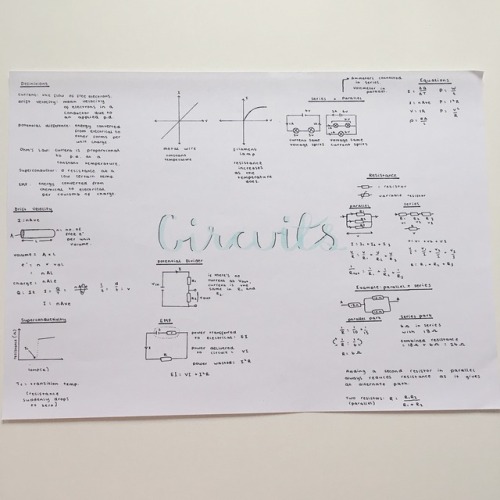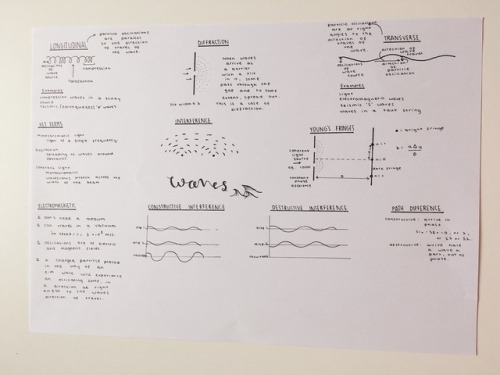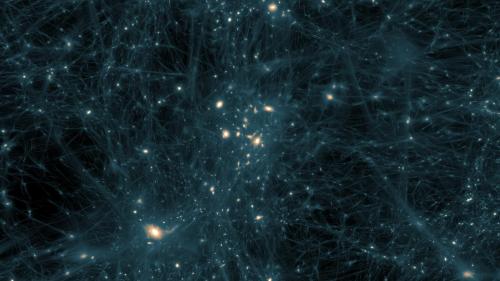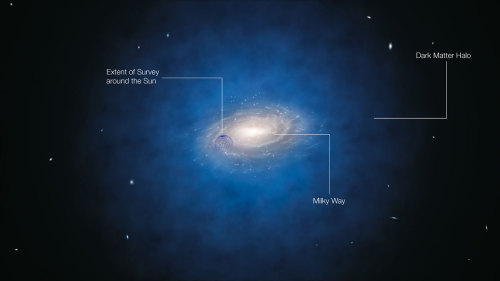#physics
this took me so long to make, especially because I really struggle with understanding circuits
the little photos are from the great British mini heat wave last week where for a couple of days I actually felt like I was living in New Zealand, it was so warm and amazing
Post link
So the word I picked for A was (somewhat predictably) Astronomy!I thought it would be a good idea just to define what it actually is and where it comes from
The definition of astronomy is the study of celestial objects: basically anything that we can see floating around in space. This includes everything from tiny dust particles floating around the spiral arms of galaxies, to superclusters of galaxies lining up along dark matter fringes, forming the largest structures in the known universe! So its a pretty big topic! (Photo from NASA APOD)

Astronomy involves looking at the physics, chemistry and even a bit of biology of these objects to try and explain what is happening. We can use both observations and theory, and one of the key problems in modern astronomy is trying to fit the two together, specifically with things like dark matter and quasars. We need to use a wide variety of wavelengths to study space, from gamma rays to radio waves, and each section of the electromagnetic spectrum enables us to learn something different.
It is one of the oldest sciences, humanity has been staring at the stars for 5000 years, but it wasn’t until the invention of the telescope that we started making real progress. The beauty of astronomy is that anyone can do it, you only need to look up at night, and amateurs have contributed a surprising amount to the field.
The word astronomy is interchangeable with astrophysics; they are both used, but mean the same thing. This is something that confused me when I first started learning about it!
Taking a break from Tumblr over the next 2 weeks as I struggle through my university exams! Wish me luck, I’m going to need it!!!!!
In the last post of my dark matter explained series, I talked about the theory that is most likely to be correct in explaining the weird rotation we see in galaxies. This is a yet undiscovered particle called a WIMP which could be anything from a heavy neutrino to a supersymmetric particle. Whatever it is, it has to fit onto the Standard Model somewhere.
But this isn’t the only theory. Astrophysicists have been working since the late 1930s on this topic, and there are other explanations around. Another possible one is the theory of MAssive Compact Halo Objects (MACHOs) which says that perhaps there are really big, dark objects; they could be interesting things like brown dwarfs or maybe black holes. They would work in the same way as clumps of dark matter: they would sit around the outside of galaxies, causing this part of the galaxy to rotate faster than the central part, and causing us to see these strange rotation curves.
They could also explain a phenomena called gravitational lensing which is sometimes attributed to dark matter.

This image shows a very massive object (in this case, a star) which is directly in front of a galaxy many light years behind it. The star has so much mass that it is able to bend the light around causing an “Einstein ring” to appear. It is called this due to Einstein’s theory of General Relativity, which explains this quite nicely.

This diagram shows what is happening, and how a MACHO could be used to explain the effect.
So what could a MACHO be? An isolated black hole would be a good example, because when they are far away from any other stars, than they cannot form an accretion disc, which would make it basically invisible to our eyes. The only way we can see them is through effects like gravitational lensing.
Even MACHO theory seems like a really good explanation it just doesn’t work well enough to explain rotation curves. It seems there just isn’t enough normal matter present in the Universe to account for MACHOs being present in nearly every galaxy. A new type of matter needs to exist to explain this, and unless there are massive stars or black holes made out of a new unknown particle then it seems like MACHOs just won’t work.
But what if everything we have worked out is wrong? What if galaxies don’t actually need more mass? What if Newton was wrong??
More to come in the next post!
A shot of just a tiny bit of the Andromeda Galaxy, from the sharpest ever view taken by the Hubble Space Telescope [NASA] [995x466]
Some of the 100 million stars visible in the new Andromeda image
Post link
Dark Matter 4: What is Dark Matter made of? - The search for WIMPS
In my last post, I talked about how we can see the effects of dark matter not just in galaxies, but in the wider Universe as well. Gravity pulls the galaxies into a ‘cosmic web’ pattern - called galactic filaments.
Now we are sure that there is more mass in the universe than we can see, we can start to think about what this extra mass actually is. Obviously, it must be either very difficult or impossible to see with light, and it must be very heavy. This shows that it is not baryonic or 'normal’ matter - stuff made out of protons and neutrons that we can see all around us in everyday life. Normal matter can interact with light, and this is why we can see it - it reflects and diffracts light into our eyes. If a dark matter particle exists, then it shouldn’t interact with light at all, and this is why can not zoom in with a telescope and actually see it.
It makes sense then to assume that dark matter is not 'normal matter’ and must be made out of something more exotic. We know that normal matter is made of atoms which can be split up into particles, so can we get 'dark atoms’ made up of 'dark particles’?
The first image I have included shows a few types of particle that dark matter could be made out of. Out of all of these, the most likely theory seems to be that dark matter is made out of a new type of particle called a Weakly Interacting Massive Particle (WIMP). These basically do what they say on the tin - they don’t interact with light very much, and they are really heavy (up to 1000 GeV!).
The second image shows the Standard Model of Elementary Particles - a list of all the different types of particles we have found so far. If WIMPs do exist then they will have to fit into this model somewhere, which is why it has been suggested that they are a type of neutrino (see the bottom row). This is why the hunt for dark matter particles is really on, and scientists at CERN are hopeful that they may be able to find something when the accelerators are turned on later this year.
But if a dark matter particle can’t be found, what happens then? Well dark matter might not exist and we might have to find another theory to try and explain it all! More to come in the next post!
Post link
Just realised how long my last post was! I’ll try and cut it down for the next one in my Dark Matter Explained series! Stay tuned :)
Dark Matter 3: Filaments - The largest structures in the universe
In my last blog post, I talked about how dark matter or something similar must exist in galaxies, as they seem to be rotating far too quickly to match Newton’s laws. If this dark stuff does exist, then it must be dominant towards the outside of the galaxies, forming a ‘halo’ structure, which would explain why all the stars and gas we see here seem to travel at very fast speeds.
However, we are yet to find a dark matter particle, so in order to make dark matter seem like a more realistic theory, we need to find another use for it in the Universe. The force of gravity is more difficult to see on a small scale so we are unlikely to see its influence here on Earth. So the solution is clear, we need to look at bigger structures in the Universe!
Well what’s bigger than a galaxy? What can be bigger than the largest collection of stars in the universe? It turns out that we can get groups of galaxies called clusters and even bigger ones called superstructures. This makes sense; if groups of stars can attract one another enough to form a galaxy, then galaxies can attract one another to form a cluster.
This is shown in the first image, which shows a plot of galaxies as we can see from Earth. There are clear groups of galaxies visible in all directions, along with voids (which may provide evidence for dark energy - maybe I’ll make a blog series about this one day!).
However, if we zoom out even further and look at even more distant galaxies (millions of light years away), we find something really quite surprising. These superclusters all seem to line up and form filaments - this is shown in the second image. It almost acts like a 'cosmic web’ with gas clouds and galaxies all connected via the force of gravity.
This is surprising because if we look at images like the CMBR, the universe looks like it should be roughly the same in all directions. So the force gravity must be strong enough that it can pull all these galaxies together to form a very clear pattern. Its unsurprising then to find that these filaments line up with tendrils of dark matter, as predicted by simulations that calculated how the Universe formed, and how it changes over time.
So dark matter exists on both galactic scales, and also in extra-galactic scales, showing its influence through the force of gravity. It seems to line up and stick to 'ordinary matter’, causing it to form recognisable patterns in the universe. Now we know what dark matter actually does in the universe, we can now start to look at what it might be made of. Is it just so far undiscovered particle? Or could it be something bigger that we just can’t see? More in the next post!
Post link
Dark Matter 2: In Galaxies
Inmy last post, I talked about how galaxies seem to be rotating way faster than they should be and how we can see the effect on galaxies in detail by plotting a rotation curve.
So what does this show? Well, if we use Newton’s laws to try and work out whats happening, two possible problems arise. Either Newton was wrong and his laws don’t work on a galactic scale, or our calculations of galactic mass are way off. At this point in time the second problem seems to be more realistic, but I’ll go into more detail in a future post :)
So galaxies seem to be too light, but where does dark matter fit into this? Well we could say that maybe there is some stuff in the galaxy that we can’t see, and that it is much heavier than the stuff stars and gas are made of, then the problem is solved. This is the basic definition of dark matter, and it is the theory that most astrophysicists use today.
In the rotation curve of the galaxy in the last post, it was clear that the further you move away from the centre of the galaxy, the faster the stars and gas rotate. The image I have included today shows how the dark matter forms a ‘halo’ pattern rotating around the galaxy. This matches Newton’s law: more mass, faster speed. So this solves both problems doesn’t it? Galaxies are heavier, so Newton’s law can be used. Right?
Well, we don’t know. In fact we haven’t found any evidence of a dark matter particle existing. So is there any other evidence? Can we find dark matter anywhere else? More to come in the next post!
Post link

saturday 04/06/22
physics! i just wanna do a little rant on this subject because life played me. i used to hate math with a burning passion but i was always great at it. anyway i took physics because i kind of enjoyed it but i was apprehensive bc it was so heavily math based and i didn’t want that. anyway guess what? i can do physics for hours on end. its a subject i genuinely adore despite how hell bent it is on causing me suffering and failure. i fucking love it. and by extension, i’ve loved math. (yes that is a coffee stained data booklet.)
♫ hit em where it hurts - pawpaw rod ♫

friday 03/06/22
fuuuck i had three papers today. im wiped. history was ok, math violated the fuck outta me and chem was a game. now to revise for physics n english come monday
♫ glass house - pawpaw rod ♫


monday 30/05/22
i’ve finished most of my chem topics!! and i’ve done a lot of history and math! feeling semi prepared, because they’re all paper 1 they’re relatively easy so not much revision is needed. but i’m trying to finish all my revision for them so that i can channel energy into physics and french which are weaker subjects
♫ feels like - lucky daye ♫
Crushing Anvil With Hydraulic Press [Hydraulic Press Channel]
Anvil and hammer vs. hydraulic press!
Do not try this at home!! or at any where else!!
facebook.com/officialhpc
This is cool (btw it’s originally from a YouTube channel called Brick Experiments)
Not quite sure whether to be concerned by the fact that I have Physics paper one on Thursday and I still cannot understand how Ships that weigh tons float on water.
“An elegant demonstration of a fundamental property of nature.“
Paul-Antoine Moreau said this about the first ever photo of quantum entanglement, a phenomenon so strange that Einstein called it “spooky action at a distance.”
Quantum entanglement occurs when two particles become inextricably linked, and even when separated— whatever happens to one immediately affects the other, regardless of the distance between them (hence Einstein’s description).
But I feel like these same words could be said about a waterfall, an elegant demonstration of the fundamental and bizarre properties of water, which we still don’t fully understand.
If you haven’t already seen it, the photo by Moreau and his team shows entanglement between two photons - two light particles. They’re interacting and - for a brief moment - sharing physical states.
#quantumentanglement #photons #waterfalls #moreau #glasgow #bellinequality #physics #colombia
https://www.instagram.com/p/CHvH8HGouh4/?igshid=prbqkzinepv0
Post link
‘Summer with Oki - Free Wallpaper!’
This is a big thanks to all the wonderful followers (even if you’re not, you’re wonderful too!), and I hope you guys have a wonderful summer <3
The high res found on my Patreon for free here: https://www.patreon.com/posts/summer-wallpaper-20802943
——–
If you enjoy my works, please consider supporting me on Patreon <3 | https://www.patreon.com/Werethrope
Post link
















